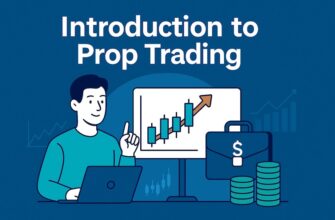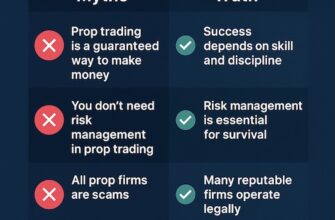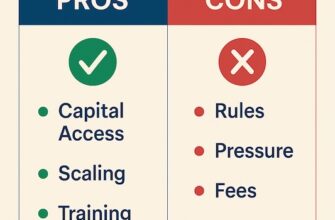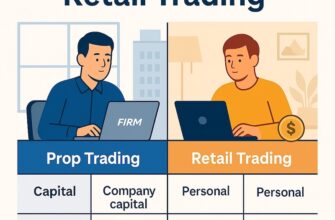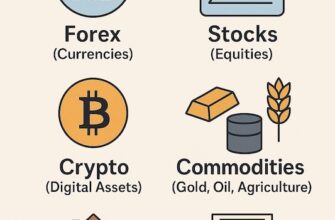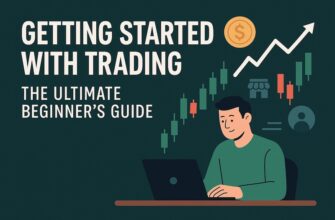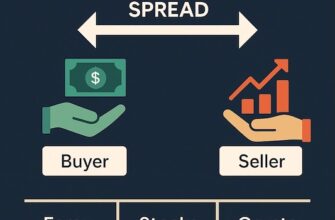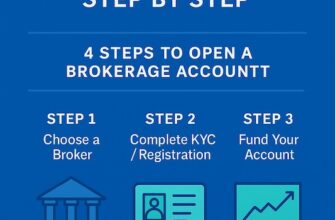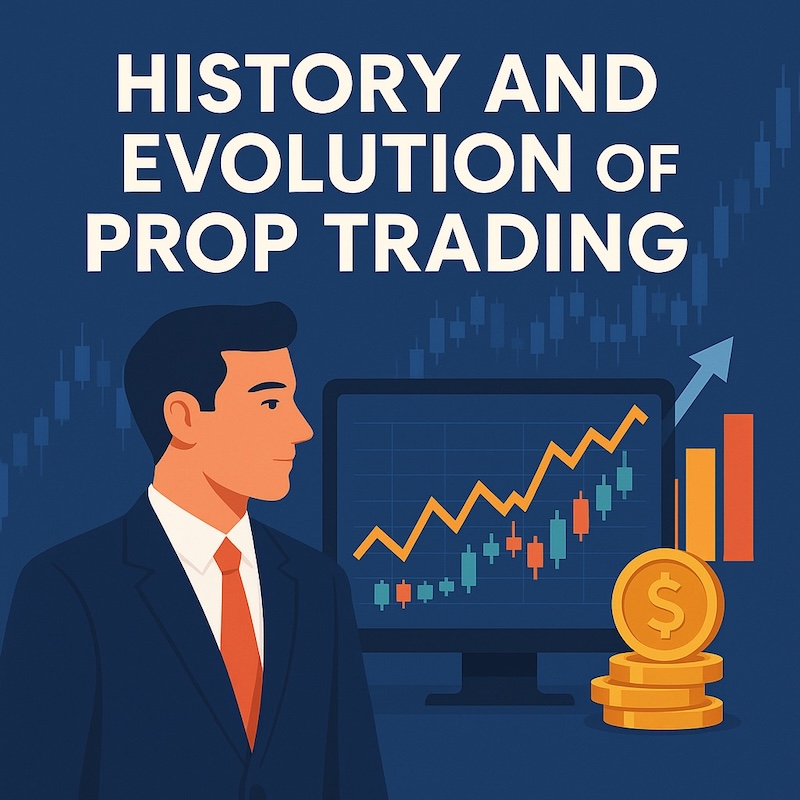
Proprietary trading, commonly known as prop trading, has gone through a remarkable transformation over the past century. What began as banks speculating with their own money on Wall Street evolved into billion-dollar trading desks, faced heavy regulatory restrictions, and eventually gave rise to a new wave of independent firms and online trading models.
For anyone interested in the trading industry, understanding the history of prop trading is essential. It reveals how financial markets developed, how regulation shaped practices, and why today’s prop trading firms look very different from their predecessors.
- Origins of Proprietary Trading
- Growth of Prop Desks in Investment Banks (1980s–2000s)
- Regulatory Changes: The Volcker Rule
- Rise of Independent Prop Firms
- Modern Prop Trading Models
- Remote Trading and Funded Accounts
- Technology and Algorithms
- Accessibility for Individuals
- Challenges
- Future of Prop Trading
- Key Takeaways
- FAQ
Origins of Proprietary Trading
The origins of prop trading go back to the early days of modern finance in the 19th and early 20th centuries. Banks and brokerages discovered that instead of merely executing trades for clients, they could also trade with their own money to capture profits directly from the markets.
- Early Wall Street: In the late 1800s, major banks like J.P. Morgan and Goldman Sachs began building trading operations. These desks initially focused on bonds, government securities, and equities, taking advantage of price discrepancies and market inefficiencies.
- Banking model: At the time, the distinction between client capital and bank capital was less rigid. Banks were free to use their own balance sheets to speculate.
- Global parallels: In London, Paris, and Frankfurt, similar practices emerged, with merchant banks speculating in foreign exchange and commodities markets.
In this era, proprietary trading was essentially a natural extension of being a financial intermediary — banks had access to information and capital, so they put both to work for their own accounts.
Growth of Prop Desks in Investment Banks (1980s–2000s)
The evolution of prop trading accelerated dramatically in the late 20th century. By the 1980s, financial markets were becoming more global, more liquid, and more complex. Investment banks responded by creating large, dedicated proprietary trading desks.
- 1980s–1990s expansion: As deregulation spread across the U.S. and Europe, banks were encouraged to innovate. They hired PhDs, mathematicians, and engineers to build quantitative models. Prop desks became testing grounds for financial innovation, including derivatives, structured products, and arbitrage strategies.
- Key players: Firms like Goldman Sachs, Morgan Stanley, Lehman Brothers, and Deutsche Bank invested heavily in prop trading. Some desks generated billions in annual revenue.
- Culture: These trading teams developed reputations for aggressive risk-taking and astronomical bonuses. For many aspiring traders, joining a bank’s prop desk was the ultimate career goal.
- 1990s technology boom: With the rise of electronic trading, banks’ prop desks expanded into new asset classes like options, futures, and credit derivatives.
By the early 2000s, proprietary trading had become a cornerstone of Wall Street’s profitability. It wasn’t just an activity — it was an identity for top banks.
Regulatory Changes: The Volcker Rule
The 2008 global financial crisis brought an abrupt shift. Regulators blamed excessive risk-taking — including by proprietary desks — for amplifying the collapse.
- Crisis impact: Many banks faced massive losses on their own trading books. Public and political opinion turned against the idea of banks “gambling” with their own capital while taxpayers bailed them out.
- Volcker Rule: Introduced as part of the Dodd-Frank Act in 2010, the Volcker Rule prohibited U.S. banks from engaging in proprietary trading for their own accounts. The rule sought to separate client-focused services (like lending and market-making) from speculative risk-taking.
- Result: Many banks shut down or spun off their prop trading desks. Talented traders left investment banks to join hedge funds, start their own firms, or move into independent prop models.
The proprietary trading history after 2010 was defined by this regulatory shift. While prop trading didn’t disappear, it became decoupled from traditional banking.
Rise of Independent Prop Firms
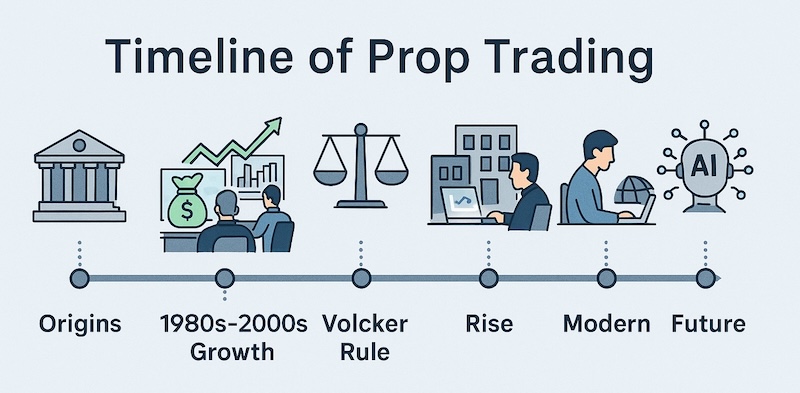
With banks restricted, the next phase in the evolution of prop trading was the growth of independent proprietary trading firms.
- Early examples: Even before the Volcker Rule, firms like Jane Street, DRW, and Jump Trading had already been carving out niches in high-frequency trading (HFT) and derivatives.
- Post-2010 boom: The ban on bank prop desks accelerated the rise of these firms. Former bank traders launched new businesses that could operate free of banking regulation.
- Business model: Independent prop firms trade with their own capital, keep all profits, and often recruit traders by offering access to firm capital in exchange for a profit split.
- Global spread: Independent firms flourished in Chicago, London, Singapore, and Hong Kong, turning prop trading into a global industry.
This period marked the shift from Wall Street dominance to a more decentralized network of specialized firms.
Modern Prop Trading Models
Today, prop trading looks very different from its early days. The industry has embraced new structures and technologies.
Remote Trading and Funded Accounts
One of the biggest innovations has been the rise of remote prop trading firms that provide capital to traders worldwide. Instead of requiring huge deposits, firms offer “funded trader programs.” Traders pass an evaluation challenge, and if successful, receive access to firm capital.
Technology and Algorithms
Modern prop firms are highly tech-driven. Many rely on algorithms, quantitative models, and high-frequency strategies. Others use advanced risk management systems to control capital allocation and protect against blow-ups.
Accessibility for Individuals
Unlike old Wall Street desks, modern prop firms allow talented individuals with modest resources to participate. Anyone with skill and discipline can potentially access large amounts of trading capital.
Challenges
Despite opportunities, challenges remain:
- Fierce competition from hedge funds and algorithmic giants.
- High failure rates for new traders.
- Intense pressure to deliver consistent returns.
Still, compared to the exclusivity of old prop desks, today’s models are more inclusive and global.
Future of Prop Trading
Looking ahead, the future of prop trading will likely be shaped by technology, regulation, and globalization.
- Artificial Intelligence: AI-driven models are already entering trading. Firms using machine learning for pattern recognition and predictive analytics may dominate.
- Algorithms & Automation: Execution will continue to become faster and more precise. The boundary between prop firms and hedge funds may blur further.
- Global reach: As internet infrastructure improves, prop trading will expand deeper into emerging markets, attracting talent from countries outside traditional financial centers.
- Regulation: Authorities may continue to scrutinize leverage and risk-taking, especially as retail access to prop firms grows.
- Hybrid models: We may see firms offering a mix of trading education, funding, and performance-based contracts, blending the lines between training companies and traditional prop firms.
The history of prop trading shows a pattern of resilience: whenever regulation or crises reshape the industry, it adapts and evolves. There’s little doubt it will continue to do so in the future.
Key Takeaways
- The origins of prop trading trace back to early banks speculating with their own capital in the 19th century.
- From the 1980s to the 2000s, prop desks in investment banks became major profit engines, fueled by technology and deregulation.
- The Volcker Rule after the 2008 crisis forced banks to shut down their prop desks, leading to a wave of independent firms.
- Independent prop firms and remote trading models now dominate, making prop trading more accessible and tech-driven.
- The evolution of prop trading continues with AI, global participation, and innovative business models.
FAQ
When did prop trading start?
Prop trading started in the late 19th and early 20th centuries, when banks on Wall Street and in Europe began speculating with their own capital alongside client services.
How has prop trading changed over the years?
It evolved from bank-based desks to independent firms. Technology, algorithms, and remote access have transformed the industry into a global, tech-driven field.
What impact did the Volcker Rule have?
The Volcker Rule, passed after the 2008 financial crisis, banned U.S. banks from proprietary trading. This led to the closure of bank prop desks and the rise of independent firms.
Is prop trading still profitable today?
Yes, but it is competitive. Success depends on technology, strategy, and discipline. Many firms now recruit traders worldwide, offering funded accounts with profit splits.
What will shape the future of prop trading?
AI, automation, and global access are likely to dominate the next chapter of proprietary trading history.

